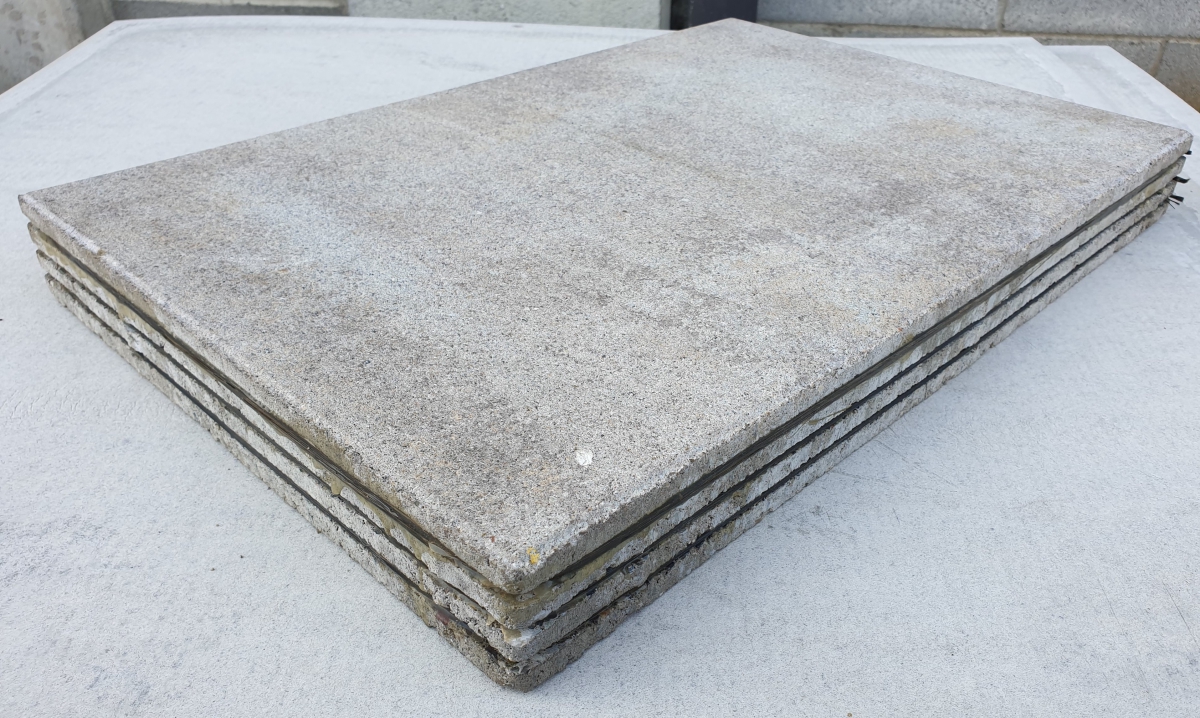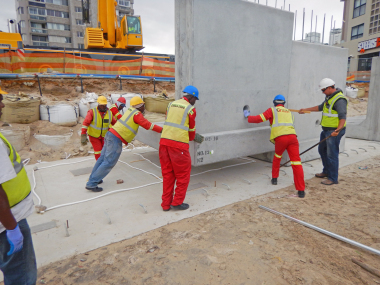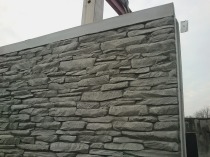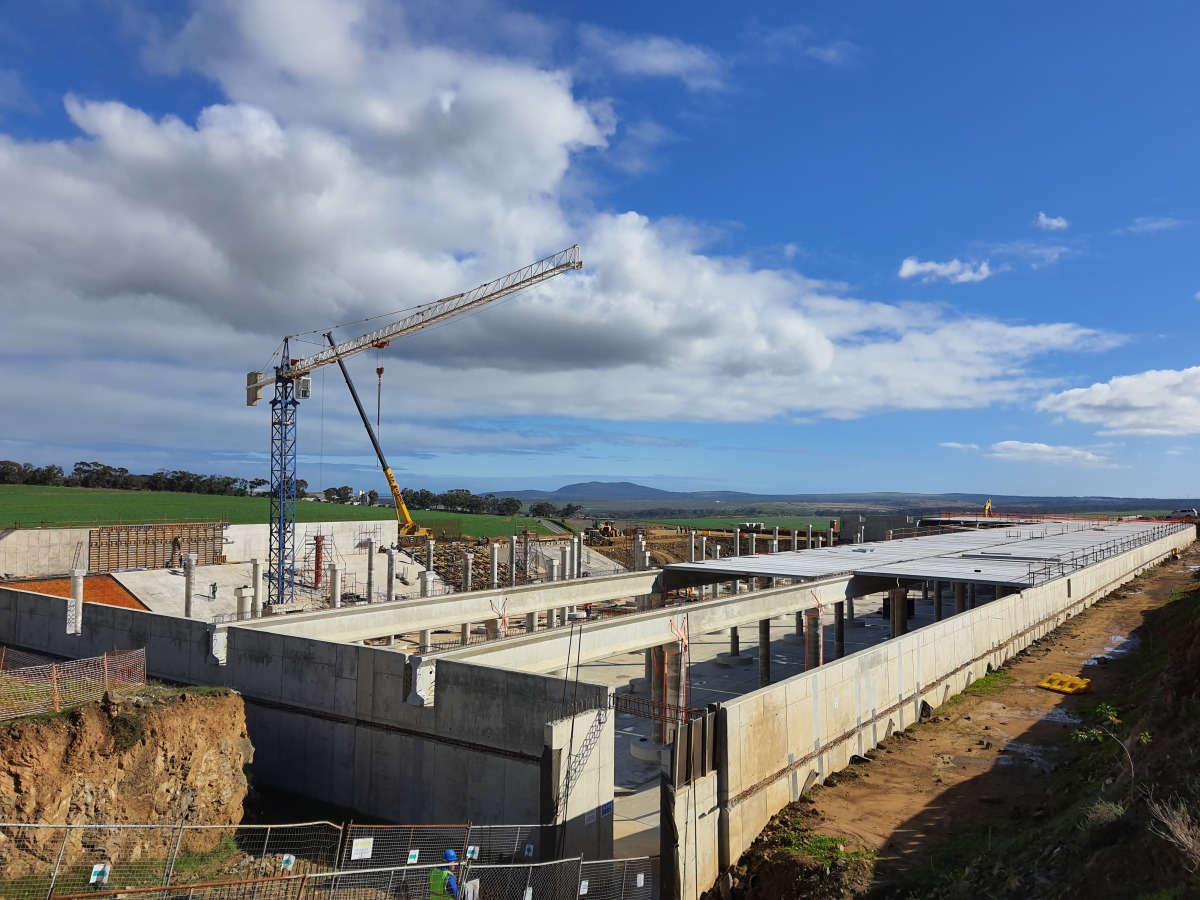Precast Box Culvert Solves a Steep Problem
12.11.2018
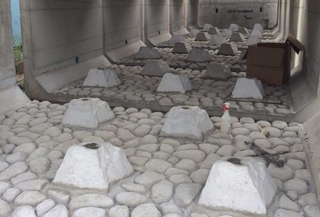 About five boulders were placed in each culvert section (Figure: S. D. Ireland)
About five boulders were placed in each culvert section (Figure: S. D. Ireland)
How do you create an artificial streambed that must traverse steep-pitched terrain but also maintain its streambed materials during large storms? That is the problem the precast division of S.D. Ireland Concrete Construction Corporation and engineers at Hoyle, Tanner & Associates worked together to solve using a precast concrete box culvert solution as the National Precast Concrete Association (NPCA) reports.
The project originated from the town of Duxbury, Vermont’s, need to repair an existing box culvert. Vermont requires that box culverts be filled with stone, rocks and dirt after installation to mimic an actual streambed but the natural slope of the stream – a 15% grade – provided limited options for a new structure that would meet town and regulatory official’s approval.
Constructible and cost effective
The solution proposed was to produce a precast concrete box culvert with a textured floor pattern monolithically cast into the culvert’s bottom. However, before making the project available for public bidding, Jon Olin, P.E., vice president of Hoyle, Tanner & Associates, wanted to meet with a local precast concrete producer to determine if the project was feasible.
“S.D. Ireland welcomed us to their precast plant and while standing on their box culvert forms explained their casting process as well as the capabilities and limitations of casting the form-lined stream bottom.” Olin said. “Their feedback was critical in helping our design team to better understand the fabrication process and develop a set of plans and details that were constructible and cost effective.”
56 precast concrete boulders
S.D. Ireland was eventually awarded the precast box culvert fabrication for the project on the winning public bid of Griffin & Griffin Excavating.
According to Eric Barendse, S.D. Ireland’s precast division manager, the production process was completed in two steps. First, a standard box culvert form was slightly modified to allow room for a textured, reusable formliner to be adhered to the bottom of the form. After the culvert was poured and stripped the formliner was removed, leaving a rock appearance on the bottom. S.D. Ireland produced nine culvert sections.
The next step was to create individual precast concrete boulders (18 inches wide by 12 inches tall) that were mechanically attached and grouted to the bottom of the culvert.
“We found a way to make a template to produce about 56 large boulders and were able to do so ahead of time before the culverts were stripped,” Barendse said. “About five boulders were placed in each culvert section. We placed them on a bed of grout with a mechanical anchor and stainless steel rebar.
Cost-effective, low maintenance
“Then, we grouted the sleeves that held it into place. Given the grade this culvert was on, all the rocks were grouted solid and were not going anywhere.”
Olin said precast concrete provided both a faster installation process, since the site contractor did not have to install streambed material, and a better control for the final product, since specific boulder placement is difficult to achieve with stone infill. The culvert was installed in September, and town and regulatory officials have expressed satisfaction with the structure.
“We are very pleased with how the project came together and the early results of the stream flow through the culvert,” Olin said. “This type of structure won’t be the preferred alternative for all locations, but for a high-gradient small stream crossing this provides a cost-effective solution with low maintenance and long-term benefits to water quality and fish passage.”
CONTACT
S. D. Ireland
193 Industrial Avenue
Williston, Vermont/USA
+1 802 8636222
National Precast Concrete Association (NPCA)
1320 City Center Drive, Suite 200
Carmel, IN 46032/USA
+1 800 366-7731


